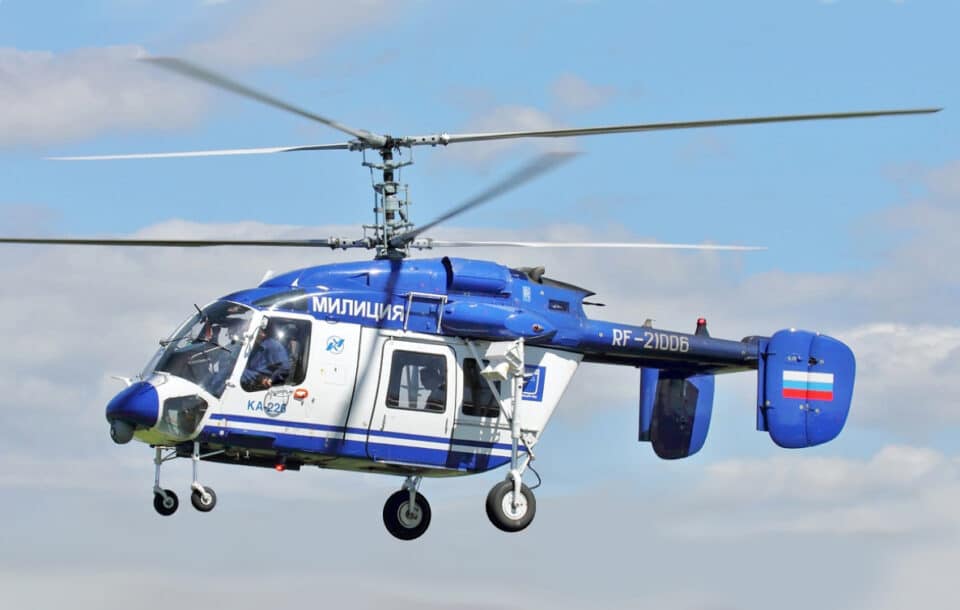Aerospace
India’s HAL will build the Russian KA 226 helicopter in Karnataka.

Defence PSU The new Hindustan Aeronautics Limited (HAL) helicopter factory in Tumakuru, which spans 615 acres, is ready to begin phase-1 operations after establishing the manufacturing, structural assembly, final assembly-line facilities, helipad, flight hangar, ATC, equipping hangar, administrative building, and other facilities. According to HAL, the factory was constructed in accordance with industry 4.0 standards and is furnished with IT services and an Integrated Building Management System (IBMS), which serves as the operational hub of the entire campus and has complete control and oversight over all services.
A capacity of 30 LUHs per year has been built for phase-1 operations, and this can be increased to 60 choppers annually. Regarding the Ka-226, are awaiting approval from the MoD. This has a designated area within the Tumakuru facility. After the agreement is signed, a joint venture between HAL and Russian Helicopters will manufacture the Ka-226 in Tumakuru. According to a deal between New Delhi and Moscow, 200 helicopters will be purchased, 135 for the Indian army and 65 for the Indian Air Force, and some technology will also be transferred.
Although Nirmala Sitharaman, the defence minister, gave a preliminary assessment of the Ka-226 deal’s value of Rs 20,000 crore in the Lok Sabha, commercial negotiations have not yet started. According to the MoD, the LUH has received initial operational clearance (IOC), and HAL is scheduled to complete 12 limited series production (LSP) helicopters by 2023–2024—six for the army and six for the IAF. The first four are anticipated to be finished by the end of this fiscal year, while the remaining eight will be constructed in the next one.
The order for the first 12 LUH was worth between Rs 1,500 crore and Rs 2,000 crore, according to an earlier estimate by Madhavan. The cost may have increased from the early projections, but a revised estimate for the same was not immediately available. In addition, although the Karnataka government declared it has approved the HAL helicopter project in Tumkur with an investment of more than Rs 5,000 crore, there was no official confirmation on how much HAL has invested in the plant thus far. Tumakuru has plans for more expansion, An engine facility carbon filament manufacturing, and the second phase will see an engines facility, carbon filament and composites factory and other facilities come up.

Aerospace
Boeing Transfers Rocket Stage to NASA, Paving Way for Human Moon Mission

Boeing has achieved a significant milestone by providing NASA with the second core stage of the Space Launch System (SLS) rocket.
This crucial component, crafted at NASA’s Michoud Assembly Facility (MAF), is set to propel the Artemis II crew into lunar orbit, marking humanity’s return to deep space after a 50-year hiatus.
The monumental Boeing-built rocket stage, the largest element of the Artemis II mission, will embark on a journey aboard the Pegasus barge, traveling 900 miles to NASA’s Kennedy Space Center.
Comparison of two legendary aircraft B777x vs B747 aircraft:Click here
Upon arrival, it will be meticulously integrated with other essential Artemis II components, including the upper stage, solid rocket boosters, and NASA’s Orion spacecraft within the iconic Vehicle Assembly Building. This intricate integration process is a vital step toward the eagerly anticipated Artemis II launch, slated for 2025.
“Boeing-built products helped land humankind on the moon in 1969, and we’re proud to continue that legacy through the Artemis generation,” remarked Dave Dutcher, vice president and program manager for Boeing’s SLS program. “Together, with NASA and our industry partners and suppliers, we are building the world’s most capable rocket and paving the way to deep space through America’s rocket factory in New Orleans.”
NASA, Lockheed Martin Reveal X-59 Quiet Supersonic Aircraft:Click here
The delivery of Core Stage 2 marks a significant achievement in the evolution of the SLS rocket. Towering over 200 feet and powered by four RS-25 engines, this core stage, coupled with two solid-fueled booster rockets, will generate a staggering 8.8 million pounds of thrust. This immense power is crucial to launching Artemis II and future missions into the vast expanse of space.
The SLS rocket stands unparalleled in its capability to transport both crew and substantial cargo to the moon and beyond in a single launch. Its extraordinary capacity will facilitate the delivery of human-rated spacecraft, habitats, and scientific missions to destinations including the moon and Mars, ushering in a new era of space exploration.
-

 Travel1 week ago
Travel1 week agoAir India to Expand US Operations with Three New Routes After a Decade
-

 Travel2 weeks ago
Travel2 weeks agoWhy We Should Avoid These Stamps in a Passport
-

 Airlines1 month ago
Airlines1 month agoInvestigations Reveal Fake Chinese Titanium in Boeing and Airbus Jets
-

 Tech4 weeks ago
Tech4 weeks agoChina’s CATL Plans 1,800-Mile Electric Plane Launch by 2027
-

 Airport3 days ago
Airport3 days agoTop 10 Largest Airports in the World by Size
-

 Aerospace4 weeks ago
Aerospace4 weeks agoChina’s Fighter Jets Turn Wings into Autonomous Drones
-

 Airlines4 days ago
Airlines4 days agoAir India Rolls Out A350s for Delhi-New York JFK and Newark Routes
-

 Defence3 weeks ago
Defence3 weeks agoBoeing Enhances Chinook with New Engines and Block II Upgrades at $96 Million







